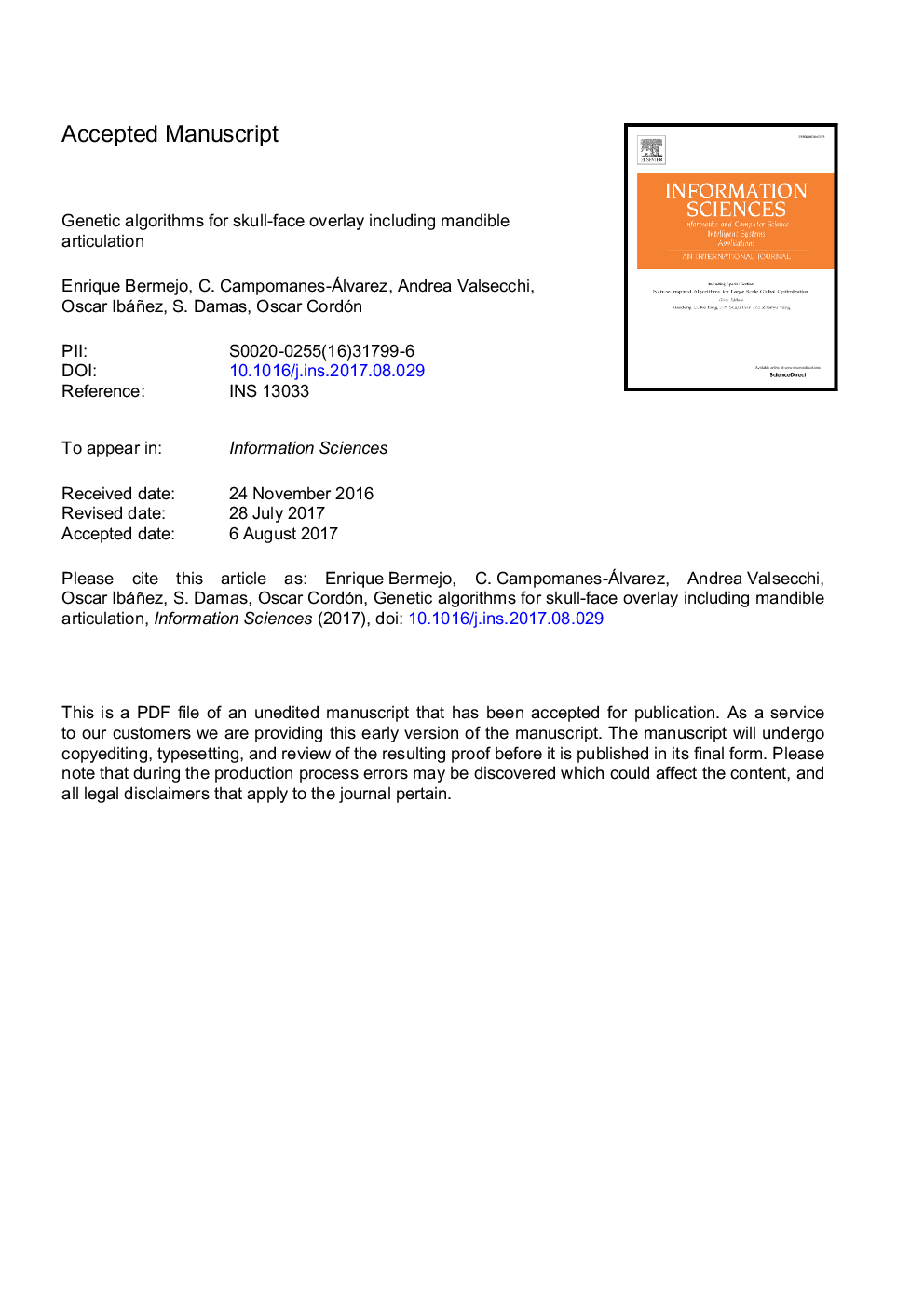| Article ID | Journal | Published Year | Pages | File Type |
|---|---|---|---|---|
| 4944158 | Information Sciences | 2017 | 31 Pages |
Abstract
Craniofacial superimposition (CFS) is a skeleton-based technique that aims to provide identity to a skull through its superimposition with one or more photographs of candidate missing people. While traditionally performed by forensic experts, computer-aided CFS methods can now provide substantial speedups and are quickly progressing towards a large degree of automation. A current major limitation concerns the position of the mandible, which is required to be manually set by the expert beforehand in order to reproduce the facial expression of the subject in each available photograph. This is time-consuming and prone to errors. In this work, we address this issue by extending the state-of-the-art genetic algorithm-based method with the ability to allocate the mandible in the right position according to an anatomical model. Based on a dataset of simulated ante-mortem images with different mandible apertures and facial poses, we prove experimentally that the proposed method is able to effectively tackle cases displaying a much larger range of mandible positions. In fact, thanks to the new genetic design, it is able to outperform the original method, even when the mandible aperture is very small.
Related Topics
Physical Sciences and Engineering
Computer Science
Artificial Intelligence
Authors
Enrique Bermejo, Carmen Campomanes-Álvarez, Andrea Valsecchi, Oscar Ibáñez, Sergio Damas, Oscar Cordón,
